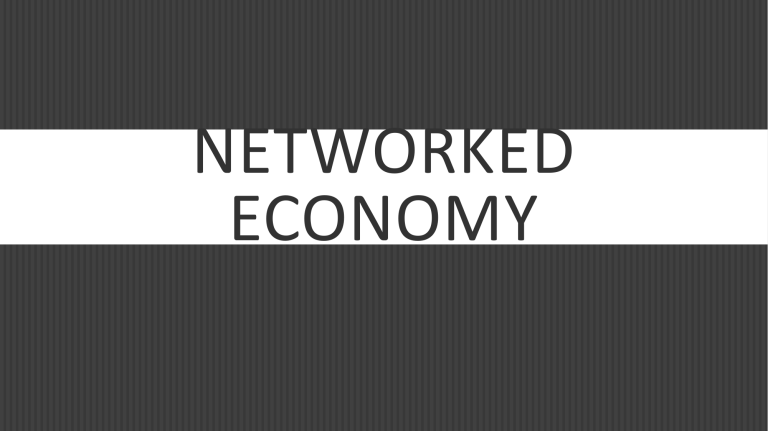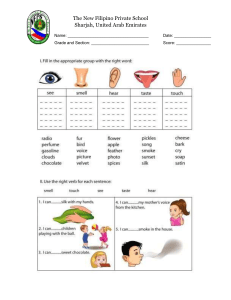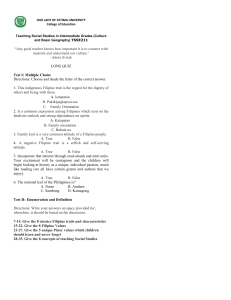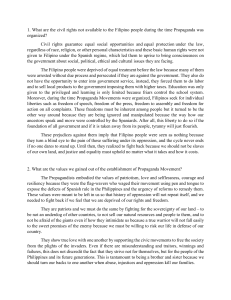
NETWORKED ECONOMY ICT EMPLOYMENT OPPORTUNITIES – STAGE 3 The Call Center market has increased steadily over the past couple of years and has been a big boom to the country from two aspects. It has helped by becoming one of the biggest employment generators in the country as well as increasing ICT spending to improve the infrastructure. As the Filipino companies looks to attract more companies from abroad into their Call Center industry they must be able to show they have the hardware and network capabilities in place to support the business. Much of the Call Center service involves handling catalog orders. As such, before a company would be willing to risk their revenues on a third party company, the Filipino company must be able to prove their network is reliable and not in danger of being infected by hackers. ICT EMPLOYMENT OPPORTUNITIES – STAGE 3 The government has been very active in supporting the enforcement of intellectual property rights. Cracking down on software piracy has proven to be a job generator by bringing 11,700 new jobs to the country within the I.T. industry. The new jobs come in the form of increased software production and related R&D efforts. In order to move to Stage 4, the poverty issue has to turn around such that a significant number of community jobs will require technical skills. B2C ELECTRONIC COMMERCE – STAGE 4 It is estimated that approximately 23% of Filipino internet users buy products and services online with total spending reaching around $265 million in 2002. In addition to Filipino citizens doing more online shopping, there is a large base of overseas Filipino workers doing online shopping, sending gifts to their families and friends. A website http://www.b2cphilippines.com/ has been designed for businesses that helps them connect with the consumer. It provides the registrant with a domain name, matching e-mail account, and 9 page website which includes scripted forms for: B2C ELECTRONIC COMMERCE – STAGE 4 ONLINE REQUEST FOR QUOTATION ONLINE REQUEST FOR SERVICE ONLINE ORDER ONLINE RESERVATION ONLINE BOOKING ONLINE ADMISSION GUEST BOOK FORM-TO-EMAIL FORWARDING INTER-OFFICE FILE SHARING INTER-BRANCH FILE SHARING Although it cannot easily be determined as to how many business established themselves with a B2C experience using a service like the one noted above, it is evident from surfing the internet in support of this research, there are countless businesses with established websites and have local (Filipino) mailing and telecom contact information. B2B ELECTRONIC COMMERCE – STAGE 4 The telecommunications sector is among the strongest performing industries within the country, which is primarily due to the expansion of mobile services. The growth rate is nearly three times that of the GDP in the Philippines. A key for the economy to grow centers around a sound technology infrastructure which means the telecommunications network must be reliable, robust and secure. The government needs to continue making investments in their infrastructure if they are to have any hope of enticing more local businesses to jump into the e-business market, as well as having foreign companies establish remote offices and businesses within the Philippines. Although it can be costly to make the necessary improvements, In some respects the Philippine government is able to do so cheaper and faster than other countries have done. This is because they lagged behind the leaders in this field long enough that costs have come down and there are more experienced technical resources that have lived through the growing pains of installing robust networks. E-GOVERNMENT – STAGE 2-3 The government has made many resources available online. However, based on information available as of 6-24-02, 19% or 72 out of 399 government agencies have not established websites. At the time of the study, only 16% of the sites qualified as being in Stage 3 while all others were in Stages 1 and 2. After having visited a number of the sites, it is evident that much progress has been made since June, 2002. Many have a transactional web presence, which includes allowing users to conduct secure transactions online and have search engines that encompass attached websites to facilitate access to specific information. However, there is a lack of consistency amongst the look and feel of the agency sites making it a bit more confusing when navigating from site to site. There are several cases where the “Page Not Found” message was received when trying to navigate within the site. Some sites are merely there just to give the agency presence on the internet, meaning the site will display the name of the agency, some nice graphics, but does not have any live links. Although the capability may exist, from the many sites visited for this research, it was not evident that any allowed interactions with suppliers that would provide procurement capability. E-GOVERNMENT – STAGE 2-3 Given the number of government agencies tasked by President Gloria Macapagal-Arroyo to establish their own websites, current research would suggest the Filipino government is somewhere between Stage 2 and 3. Much can be done to raise their level, namely, ensure all links are active, add a common look and feel to the sites particularly within a given agency and add functionality whereby suppliers can engage in government procurement. REFERENCE http://facweb.cs.depaul.edu/yele/Course/IS540/GlobalProject/20045/Philippines/NetworkedEconomy.htm?fbc lid=IwAR0aiP_oT2ZDPij61z0kRK902Eu2DVz2ChThMcNqqhObuijvpV2Kfbrlmg



